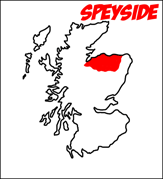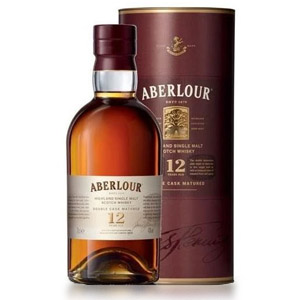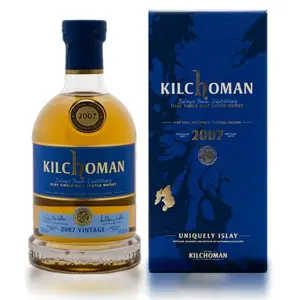Ten full years ago, I reviewed Aberlour 10-year on this blog, as one of my first posts. Amazing how time flies. My ‘review’ was about 2 sentences long, the bar that I bought the dram at doesn’t exist any more, and Aberlour 10 is no longer available in the US (although it is available in the UK). Also, I referred to its color as “orange”. Yikes.
I found a nice deal on the 12 year recently and thought I’d give Aberlour another shot to prove to me that it’s not only good for a’bunadh. (Would that really be so bad?) This, a “double-cask matured” single malt, is basically their answer for the now nearly-ubiquitous trend of thinning out your expensive sherried whisky with some not-quite-as-expensive ex-bourbon whisky, as pioneered by The Balvenie DoubleWood line. That makes it sound more cynical than it is: ex-bourbon casks can lend buttery caramel notes and a wider array of flavors to balance out the effects of a wine cask.
This Aberlour is aged in two separate cask types: “Traditional Oak” which is a funny way of saying ex-bourbon American Oak casks, and ex-Sherry casks. These are aged for 12 years and then married together in undisclosed proportions before bottling at the legal minimum 40% ABV. Interestingly, every expression in Aberlour’s official lineup is now labelled as a “Double Cask” whisky with the exception of a’bunadh. This may be their way of dealing with the expanding crisis of the Sherry barrel shortage in the whisky industry. Also, the website subtly refers to the sherry casks as “seasoned”, which usually means they are filled with sherry or a sherry-like wine and aged for short periods with the throwaway wine before being used to age whisky. To read more, check out Westland distillery’s thoughts on the current market for sherry casks.
Nose: Fruity with a ton of red grapefruit, cape gooseberry, kiwi, and decadent refined honey. Very floral as well, with a heady cloud of lemon verbena and honeysuckle. All of the fruits seem fresh and tart as opposed to the usual Aberlour dark red and black fruits. This is downright summery.
Palate: Syrupy body. Honey again, with almost no tongue burn at all. Dried apricots and golden figs replace the tart fruits from the aroma. There is a faint layer of oakiness, mostly with notes of cinnamon and vanilla.
Finish: Medium-short. The finish is a little muddled. The fruit notes are not clear, and the spicy oak notes are now marred with slightly acrid bitterness. Ends somewhat quickly, without evolving. This situation improves with further sips, which build up a little more sweetness to balance the bitterness.
With Water: A few drops of water mix up the fruits and flowers on the aroma – making them harder to place. The palate seems thinner, but the finish has more fruit. I would probably skip the water, since I liked the aroma so much in the first place.
Overall: Despite the low ABV, I would not call this watery or lacking in potency. The aroma is lovely and deeply perfumed, the palate competent and well-composed, but the finish is an outright disappointment. That said, the price is dead on and I don’t feel like the 40% ABV is unduly low in this case. I do think Balvenie DoubleWood 12 edges this one out in terms of polish and overall delivery, but if the Aberlour is significantly cheaper in your area then it’s probably a better buy.
If we treat this as an entry-level malt and assume an entry-level price, then this is a solid ‘Recommended’. Just don’t expect to be wowed beyond the aroma.









I stumbled onto Aberlour (12 year) a few years ago primarily because it was priced (at that time, anyway) much lower ($46) than comparable scotch in our part of the country (South Dakota). Your review is spot on – leave out the water. It is now my “go to” single malt. BTW, I also like the Balvenie Doublewood 12 – can’t go wrong with either one in my opinion.
Man, even those Westland’s fellas are full of nonsense when it comes to sherry casks. Let me net this out: sherry bodegas don’t retire their solera casks in anything more than a trickle. Furthermore, those casks are largely spent for any subtractive maturation purpose, and are generally not suitable for whisky maturation. Nearly all “ex-sherry” casks currently produced and used today, are seasoned casks. Those that aren’t are older laid down casks that are former shipping casks (prior to 1981)
The term seasoned has come up because some players in the industry are trying to be honest (because sites like The Whiskey Wash have been documenting the facts for quite some time: https://thewhiskeywash.com/lifestyle/secrets-sherry-casks/).
So let’s be clear: retired American Oak (which is what Bodegas in Spain currently use for their solera systems) solera casks aren’t good candidates for whisky maturation and virtually none are available anyway. Anything that’s labeled as matured in ex-sherry is either European Oak or American Oak that’s seasoned. Period.
Now, before everyone throws out their GlenDronach or A’bunadh for faking provenance, understand that even before the shipping casks went away, going back to the late 19th century, distilleries were often facing shortages of ex-sherry (shipping) casks, and would actually reinvigorate older casks or out-right season virgin casks, so this isn’t anything all that new.
Whisky is an industrial-process created product, and that includes the cask supply-chain, which has been pretty much entirely synthetic for nearly 40 years. Put aside the marketing and notions of spunky quaint Scotsmen thriftily reusing old casks, and understand that sherry casks, and the sherry used to season them, are a manufactured components (of varying quality, depending on intended use for given end-product price-points), used in the production of products sold in a multi-billion dollar industry. This is why sherry casks are vastly more expensive: they aren’t a byproduct of any other production process (e.g. ex-bourbon cask), as they once were, prior to 1981.
To quote from the The Whiskey Wash:
“When the seasoning is finished, the wine is taken out and often re-used. After a few seasoning runs it will be discarded. The wine can’t legally be sold as sherry and it’s not suited for consumption anyway. Usually it will be distilled into sherry brandy or used to produce sherry vinegar. Unsurprisingly perhaps, one of the largest producers of sherry casks (Páez Lobato) is also the largest producer of sherry vinegar (Páez Morilla).”
Once again, ignore the marketing, virtually all sherry casks produced and used today are seasoned. Now back to enjoying my A’bunadh.
This is great information, thanks Ed! I’ll sleep better knowing that I’m not hurting the industry by not drinking more sherry to keep those used casks flowing. Cheers!
So what you are trying to say is that they take any cask fill it up with a wine, waut for cask to absorb flavors of wine, then use that cask to finish the whisky? In some cases when wine casks lose their flavor they repeat the same process all over again? Thats interesting and expensive way of “mixing” wine in whisky. I will say canadians are much more practical as they simply add wine/wine spirit (upto 10%) to their whisky and simply cask it in cask, giving their whisky sweet, grape notes.
I really like this one. The Balvenie 14 is still my favorite but this one is up there. There are so many good scotches out there it’s really hard to separate them, but this one is really good.
I thought all scotch had to be aged in used American Bourbon barrels. Bourbon has to be aged in NEW American Oak, so these barrels get used once and have lots of character… scotch can then get additional aging in other things like sherry or port barrels.
All scotch has to be aged in oak barrels – distilleries prefer used American whiskey (bourbon, rye, etc.) barrels because they are cheapest, due to the requirement that bourbon barrels be aged in new wood. There’s simply a lot of ex-bourbon barrels available. Scotch, however, can be aged in any type of oak barrel. There are plenty of examples of full-term sherry barrel aging, full-term port, etc., it’s not just very common. Those barrels cost a lot more, and there are far fewer of them on the secondary market.